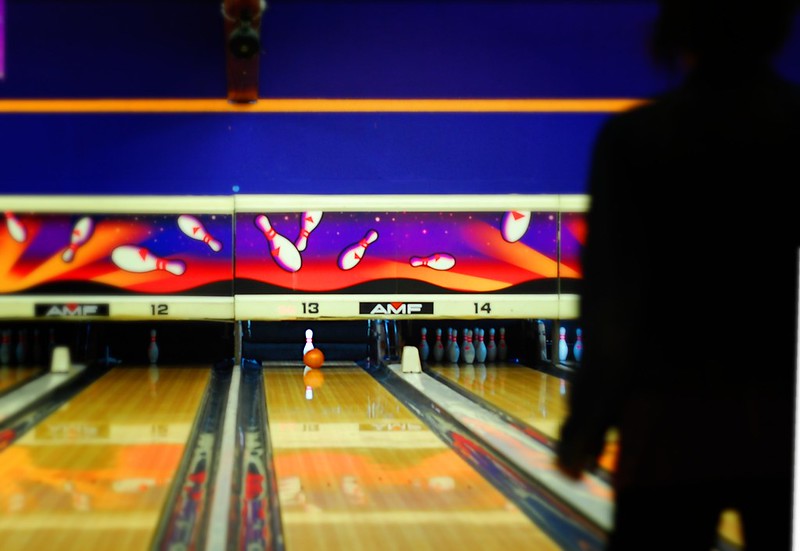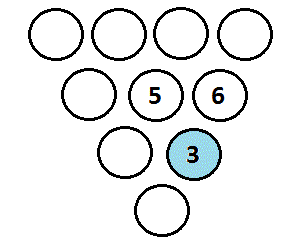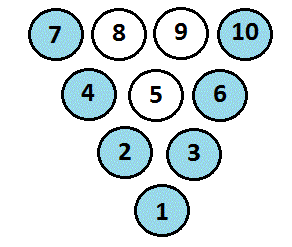
Even if you’re bowling well, you won’t get a strike every single frame. Learning how to pick up your spares is a part of the game that most beginning bowlers completely ignore, even though it is very important.
Most people think practicing spares is no fun, but regularly leaving open frames will have a devastating effect on your scores.
In fact, it turns out that you’ll be much better off stringing several spares together rather than getting more strikes and leaving open frames in between.
Good spare play can easily be the difference between a 150 game and one where you score 200+.
Even bowlers who understand they need to pick up their spares usually don’t approach the situation with any strategy; they just roll the bowling ball and pray that they’re lined up correctly.
Fortunately, there are some things you can do to greatly improve your spare pickups.
Making Adjustments to Pick up Spares
In order to pick up more spares, you will need to adjust your stance to the left or right, depending on what pins are left standing. A basic rule of thumb is to move in increments of five boards.
If you move ten boards to the left, for example, and aim at the same target on the lane, your bowling ball should go ten boards to the right of your first ball target (the pocket).
So find out which board the remaining pin rests on and make the appropriate adjustments.
Alternatively, when facing a single pin spare, some bowlers like to straighten up their shot and go with less hook.
Advanced bowlers even have a special spare ball, usually plastic so it stays as straight as possible.
It’s up to you whether you want to keep your same shot and adjust your target or switch to a straighter track. When you’re just getting started, you should try both and go with what feels most natural.
The Target Pin Method for Spares
Single pin spares are one thing, but it can be more complicated to figure out where to aim when you leave multiple pins.
To help you conquer those tougher spares, you might want to try the target pin method, which is meant to take the guesswork out of where to aim when facing a spare.
To do this, you pick out one pin as your target based on what is left standing, and line up in order to hit just that pin. This will become more clear with an example:
 Let’s say you’ve thrown your first ball and knocked down 7 pins, leaving the 3, 5 and the 6 pins (left). The best way to go about picking up the spare is using the target pin method.
Let’s say you’ve thrown your first ball and knocked down 7 pins, leaving the 3, 5 and the 6 pins (left). The best way to go about picking up the spare is using the target pin method.
Using the strategy, you aim only at the 3 pin, ignoring the 5 and the 6. The idea is if you hit the 3 pin straight on, it will knock down the whole triangle.
This idea should hopefully make sense, but when you face other spares, you must apply this logic even further.
For example, say you leave just the 5 and the 6 pin. You should still aim directly at the 3 pin’s spot, even though that pin is no longer standing.
With the target pin method you will only aim your spare shot at one of the 7 pins which form the outside of the pin triangle: either the 1, 2, 3, 4, 6, 7 or 10 (shown in blue below).

Generally, you identify the pin that sits closest to you and make that your target, as previously demonstrated. Here are a couple more examples which follow the same strategy explained above:
- If you leave the 2 and the 4 pin on the left side of the triangle, aim at the nearest pin to you, the 2.
- If you are facing a single pin in the back row, either the 8 or the 9 pin, aim at the spots of the pins closer to you on the outside of the triangle. These are the 2 and the 3, respectively.
- Even if you face a tricky mini split like the 9-10, don’t panic and aim directly at the 6 pin’s spot.
With some of these spare arrangements, you might feel fine just going just by feel and not thinking about it, but you’ll be clipping the side of the pins frequently, which is complete luck.
In order to enjoy more legitimate long-term success, you should employ the target pin method.
The Importance of Consistency for Spare Shooting
In order to to be effective, you will need to have your bowling fundamentals under control.
In particular your delivery and approach will need to be consistent in order for you to be able to hit your intended target time after time.
Also, your spare adjustments won’t always be perfect because many factors affect the ball’s path, especially the lane conditions.
The best thing you can do is take the fundamentals presented here and get some hands-on experience picking up spares.
While it might not be as exciting as knocking down all ten pins with a thunderous strike, working on your spares will pay off big time!
Next Article: The Importance of Oil and Bowling Lane Conditions